We continue Reality in Anime Week with a fantastic guest review by Lena Tama, who takes a look at I’m In Love With The Villainess from a different cultural lens than I bring to the topic. Today’s review is an adaptation of an Indonesian-language review for Sukarita, I’m in Love with the Villainess: Mendorong Topik Kesetaraan Minoritas Gender dan Seksual Bagi Penggemar Anime Indonesia.
I hope you’ll read Lena’s review and offer her kind comments and thanks – and feel free to share this and the original review in your fandom spaces! I promise tomorrow to talk about a different series… ^_^
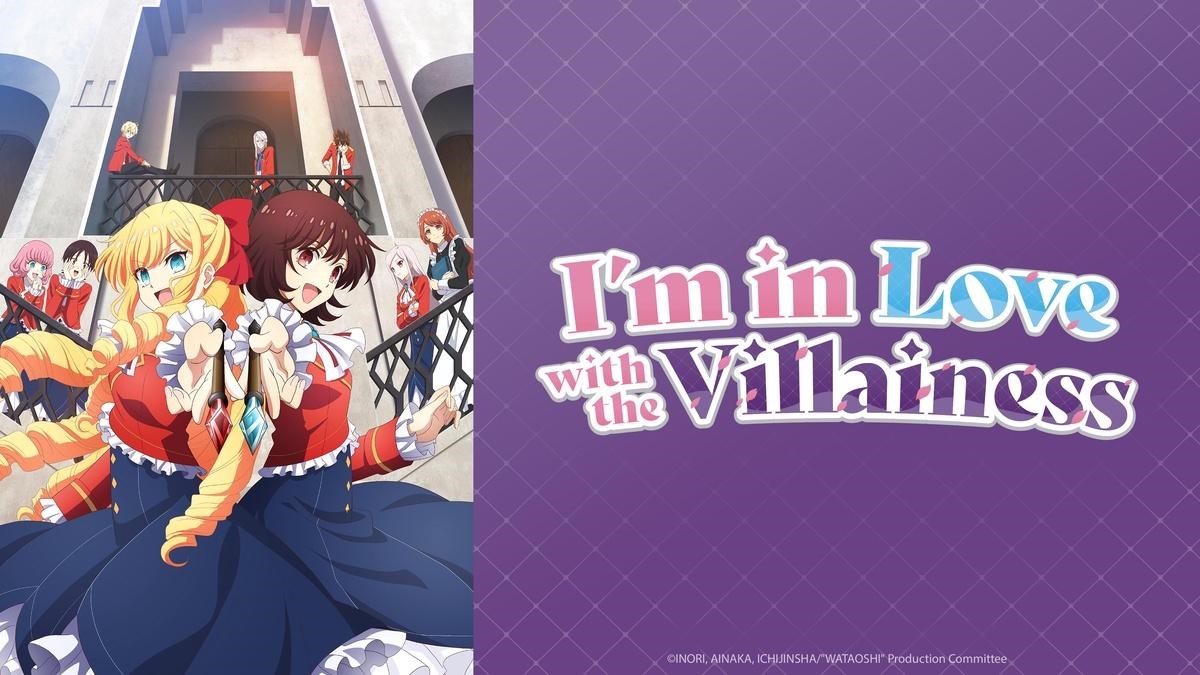 Source: Crunchyroll
Source: Crunchyroll
Anime is a popular entertainment medium among Indonesian audiences who don’t necessarily watch them for a thorough discussion of gender and sexual orientation diversity, in spite of yuri and yaoi being some of the more popular genres.
However, with the advent of gender and sexual minorities acceptance within the anime industry, there are an ever increasing amount of titles that advocate said topics in a way that is treated with respect, including I’m in Love with the Villainess 「私の推しは悪役令嬢。」or ILTV for short.
Born from a novel series by Japanese author Inori-sensei which then received manga adaptation as well as anime adaptation in early October, ILTV quickly rises to popularity across the world thanks to its topics of social issues and queer advocacy which reflect the progress Japanese people has made in accepting minority rights, which is something Indonesian audiences should also begin to accept, moreso among the average anime fans.
How the story of I’m in Love with the Villainess begins
ILTV adopts the isekai fantasy theme that may be a bit oversaturated among anime fans at this point. However, it adopts an interesting spin to the format which not only makes it fresh for existing fans but also the common audiences who aren’t necessarily into anime.
The story begins with an office lady worker Oohashi Rei, an avid otome gamer who’s also a victim of Japan’s overwork culture. During one night she plays her favorite otome game, “Revolution,” Rei collapses only to wake up in another world which happens to be the world of Revolution, the game she just played last night, complete with the story and characters intact.
Oohashi Rei, who’s now called Rae Taylor in this world, must live her life in accordance to the world settings and rules dictated by the game: Date one of the three male love interests and overthrow the game’s protagonist who’s a stereotypical noble villainess named Claire François.
However, right off the bat, Rae makes her point clear by ignoring the world’s three male love interests and instead sets her eyes on the world’s villainess. Her passion and love towards Claire isn’t even subtle since the first episode, more often than not with comedy undertone much to the villainess’ dismay.
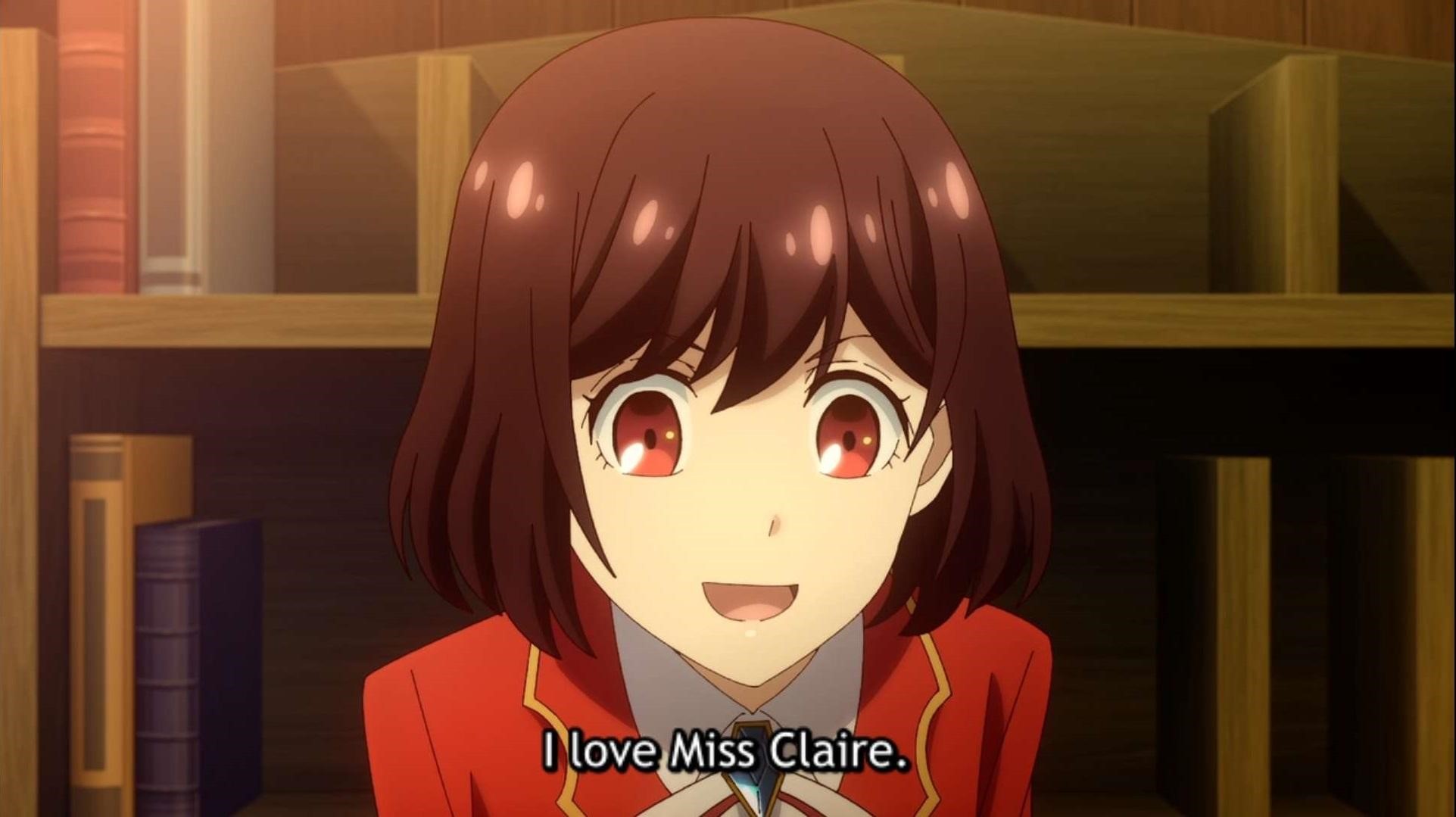
Apart from its romcom element, ILTV also provides the classic Renaissance world building with hierarchy and social status disparity between the nobles and commoners as one of its core themes. But with Rae driving the story, ILTV manages to present its heavy storytelling in a lighthearted way which helps the audiences to ingest the themes and world building. Naturally, this also helps pave the way to the discussion of its other core theme which is social acceptance of gender and sexual identity.
As early as the third episode, which is in itself a strong achievement in the anime industry, Misha Jur and Lene Aurousseau have a conversation with Rae and Claire about whether Rae’s gay due to her affection to Claire despite both of them being female. No cap, no censorship.
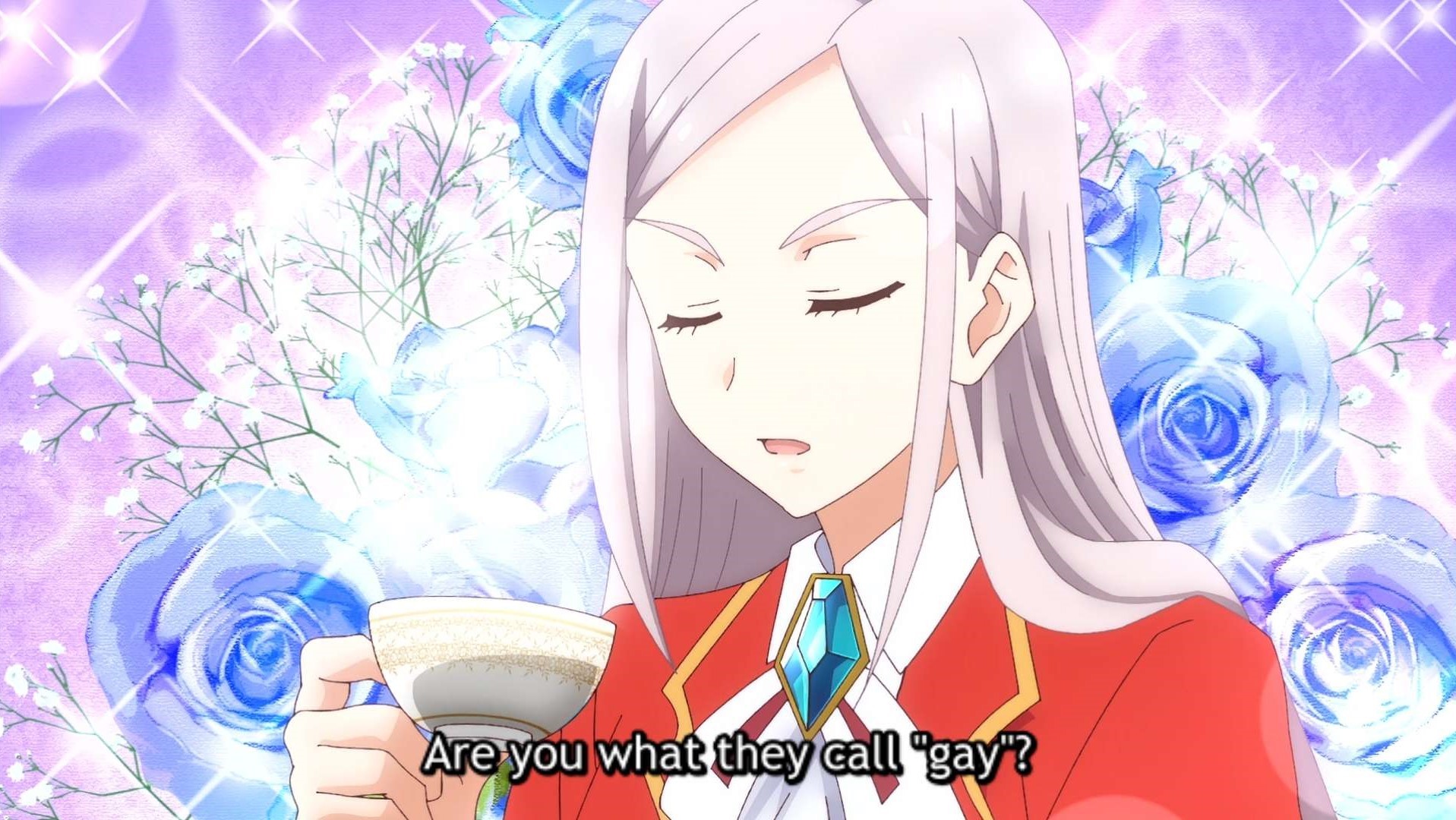
And to make the discussion even more open, Rae indeed says that she’s lesbian with no interest in men at all. Although Misha and Lene accept Rae, Claire immediately distances herself from Rae due to her prejudice and association of gay people as predators, something which Misha and Lene criticize and she reflects upon.
A huge step for anime industry
For a lot of people, excluding Indonesians unfortunately, this deep conversation between those four characters is nothing extraordinary. However, what makes it special among anime fans is that it doesn’t hold back via a more subtle message or downplay it with comedy. It’s an open, honest discussion about Rae’s sexuality.
Indeed, it’s all thanks to the way ILTV portrays the characters, both the major and minor ones, by bringing new perspectives to the table and subverting people’s expectations towards female characters in anime.
For a start, Rae Taylor openly says she’s lesbian to her friends but not to anyone else, and more often than not she would fool around for comedic purposes and to hide her fears and insecurity towards the people around her. Based on her previous life as Oohashi Rei, the prejudices and fears she experienced developed a particular defense mechanism by downplaying herself through her antics.
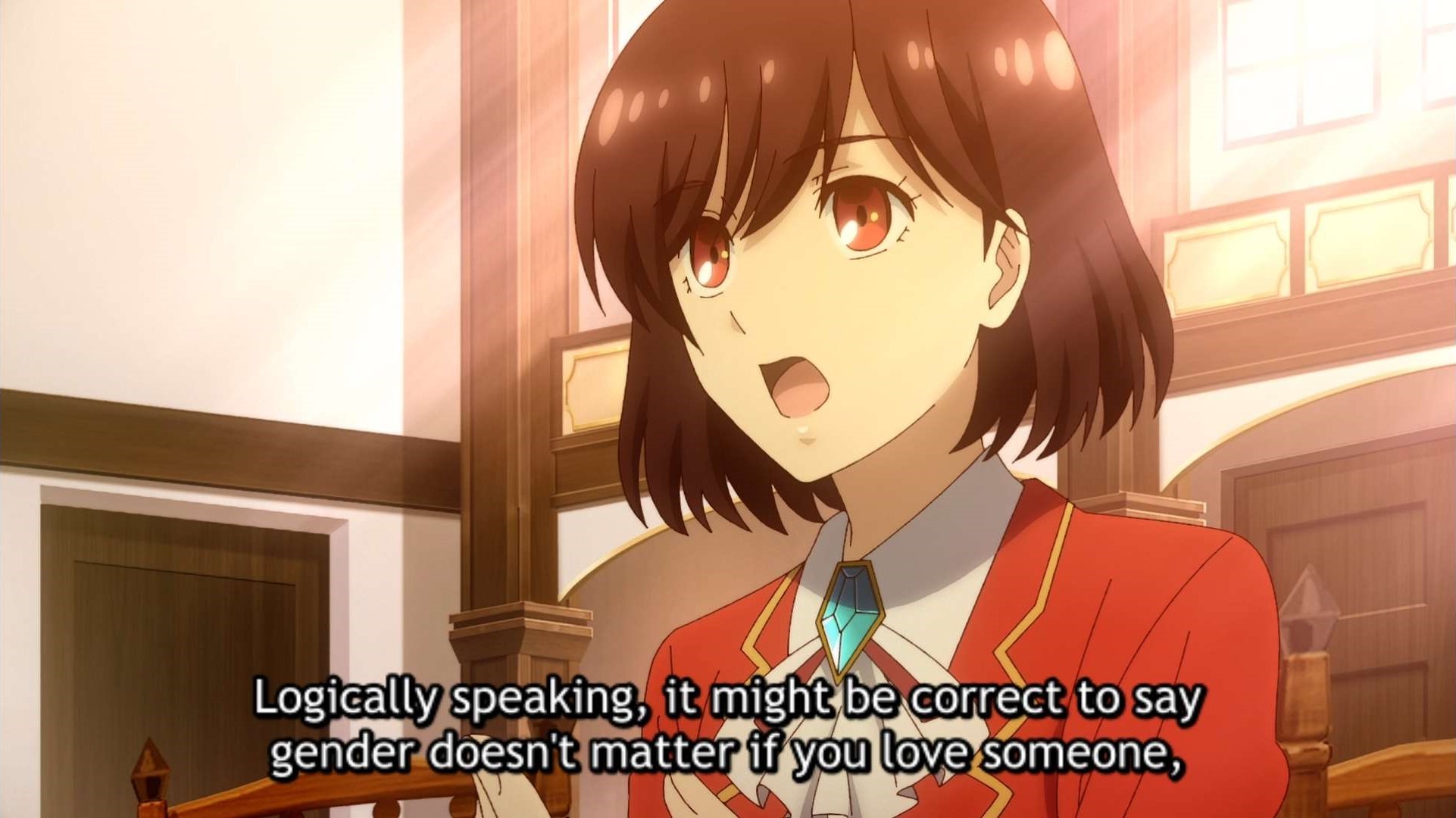
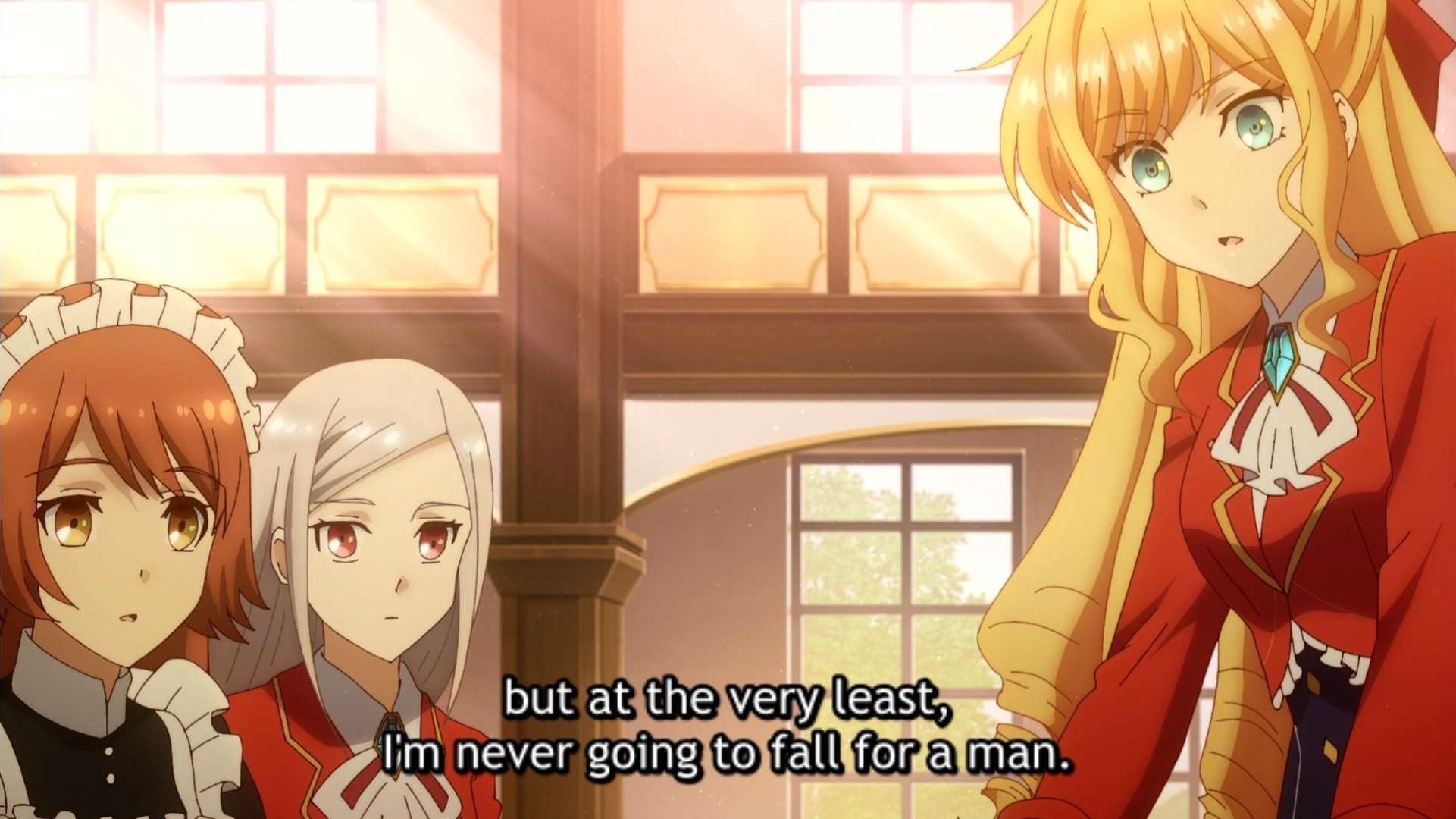
This poignant character portrayal is realistic to a fault, especially for people living in a hostile environment or a country like Indonesia where being queer is subject to discrimination by the people and authorities, and that developing a defense mechanism is mandatory to survive in the society. This makes every safe space and good friends, which allow us to express ourselves more freely in the same way that Rae does, all the more precious.
The same also goes for Claire François, the story’s supposed antagonist who openly mocks commoners and initially sees Rae as a predator for being openly gay. However, Claire manages to become humble, admit to her own faults and insecurity, and even willing to slowly open up about things previously unknown to her. This leads to her slowly acknowledging her bisexuality as she develops feelings for Rae and her antics throughout the story.
This way of presenting such a deep conversation in a respectful yet casual manner is something that I consider a success by Inori-sensei and the team production, among other social issues ILTV is about to deliver in future episodes. And as mentioned before, an open discussion about gender and sexual minorities in anime is still a rare thing to savor amid a sea of anime titles who typically pander to the cisgender heterosexual male’s fantasy along with their female characters portrayal that, more often than not, undermine gender equality in the cheapest ways possible.
That said, Inori-sensei’s portrayal of gender and sexual minorities is an early indication of her experiments in discussing many heavy social issues and political intricacies. This can be a good and bad thing depending on the theme and how the team delivers them, as I notice that fans of ILTV on the internet frequently mention a particularly taboo social issue which the story is going to unfold in the future (but not here because spoiler).
While I’m personally looking forward to ILTV as someone who only has access to the anime, I’m holding my breath towards any discussion of a universally taboo social issue in this series that might ruin its reputation among casual audiences and anime fans.
Acknowledging Indonesian anime fans’ perception towards gender and sexual minorities
Admittedly, anime as a medium is still perceived as nothing more than a childish show among Indonesian people in general, especially knowing that there hasn’t been any thought-provoking anime being broadcasted on local television channels since Indonesia first broadcasted anime on TVRI TV station in 1970 with the title Wanpaku Omukashi Kum Kum.
Adding to that is the broadcast of anime with elements of gender and sexual minorities, or the lack thereof. For decades, the nation’s most frequent anime on local television have been simply a repeat of Doraemon, Dragon Ball, Naruto, and the likes without adding anything new to the table.
The closest thing to an anime with gender and sexual minorities theme broadcasted in the country was Sailor Moon which aired on Indosiar TV station in the 90s. However, the Indonesian localization team downplayed the sapphic relationship between Sailor Uranus (Haruka Tenou) and Sailor Neptunus (Michiru Kaiou) in the same way the Western localization altered their relationship into one of familial between cousins.
This leads to the discovery of anime through the internet with people’s knowledge toward anime and its vast genre spreading wide via international TV stations, official DVD releases, and illegal streaming sites. And yet, yuri and yaoi anime retain a negative perception among Indonesian people who are openly hostile toward gender and sexual minorities, all while also perceiving a general consensus that the aforementioned genres are nothing more than a form of fanservice in its full hypocrisy.
In spite of this, the anime industry continues to evolve. Amid the hoard of fantasy harem anime that pander to the male audiences, there are also plenty of new anime titles that bring a thorough discussion of gender and sexual minorities to the table with respect such as Gundam – Witch from Mercury (but curses be upon Bandai), Adachi & Shimamura, Bloom Into You, MagiRevo, and I’m in Love with the Villainess. Even the more popular anime such as One Piece begins to portray a diverse gender expression that is neither a satire nor a parody in the form of Yamato, a trans man who quickly gets along with the Straw Hat crew.
I’m in Love with the Villainess and other similar titles mark a new step in advocating gender and sexual minorities rights within the anime industry. Not only does it make for an entertaining and relatable show which I extremely recommend for my fellow Indonesian queer friends, but it also helps showcase the medium which the average anime audiences consume aren’t letting up.
With this, I hope Indonesian anime fans begin to accept the advocate for gender and sexual minorities as well as other social issues that Rae and Claire are about to tackle in the future.
*About author
Lena Tama is an Indonesian trans woman, as well as a translator and freelance writer since 2016. Lena began indulging in the world of journalism in 2020 by joining The Jakarta Post. Aside from writing articles, Lena is also involved in advocating LGBTIQ+ rights and other groups of minorities in Indonesia
![]() Well, we have one more for Reali…../screeching noise of needle being pulled over a record surface/
Well, we have one more for Reali…../screeching noise of needle being pulled over a record surface/

